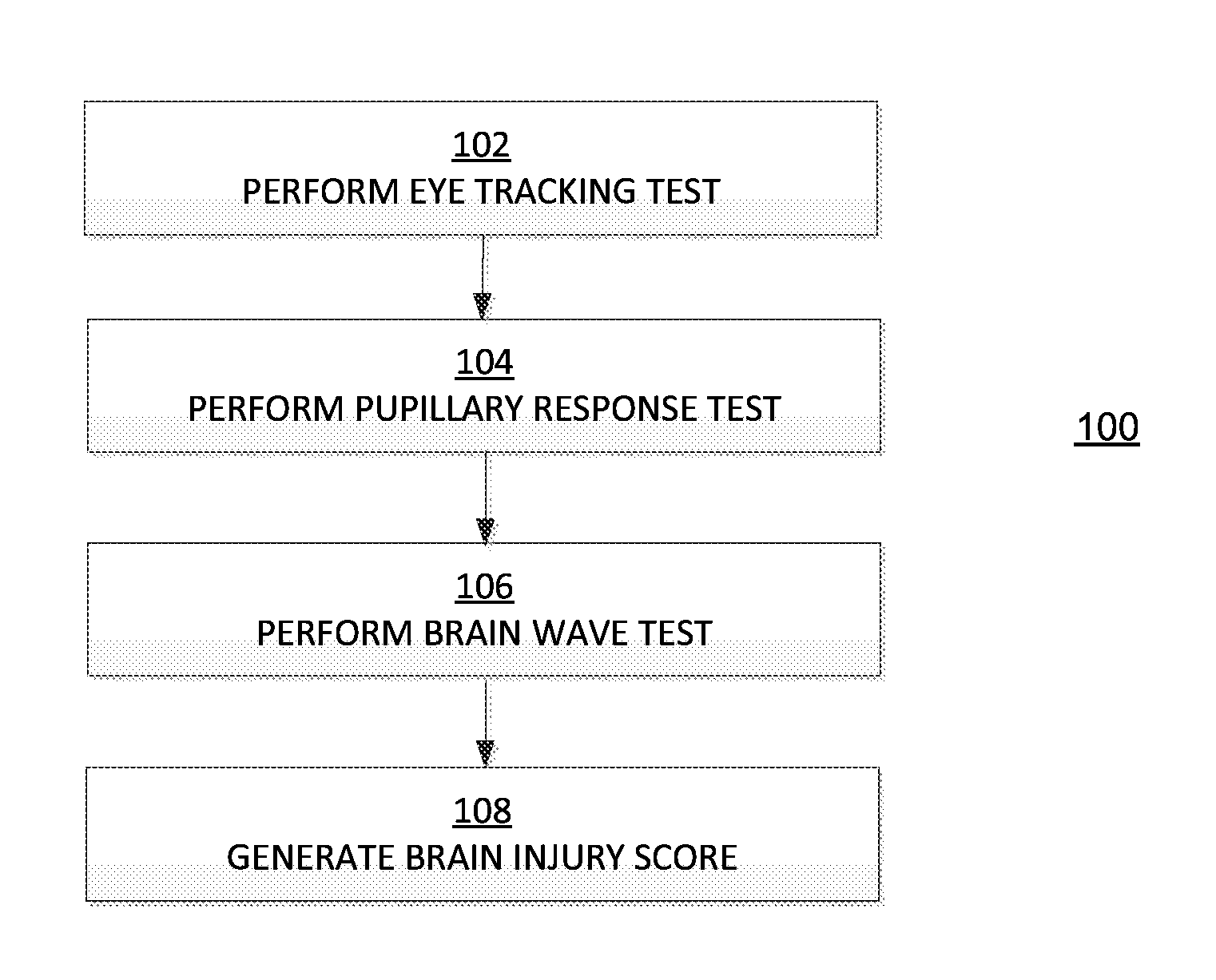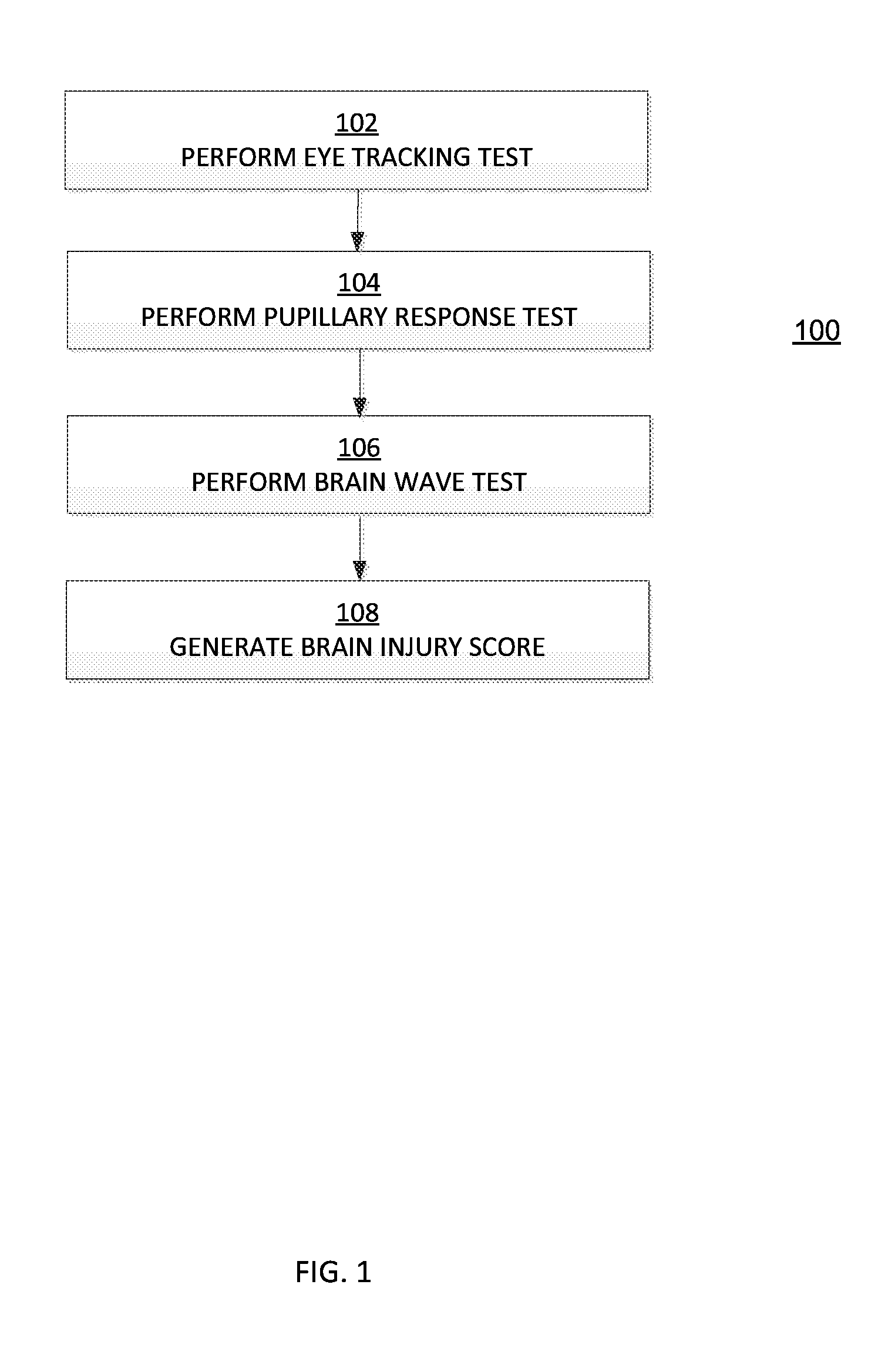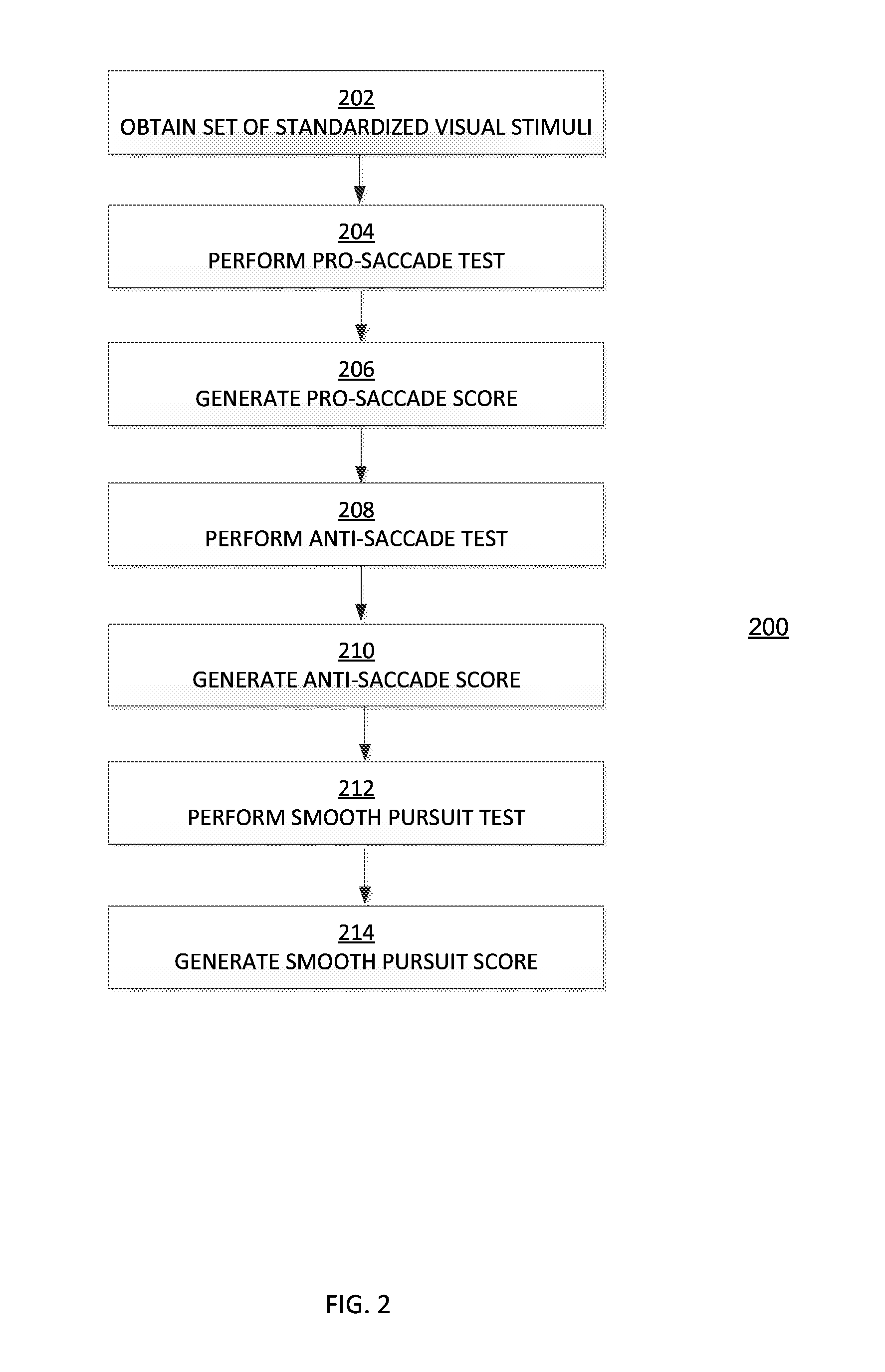Non-invasive method for assessing and monitoring brain injuries
- Summary
- Abstract
- Description
- Claims
- Application Information
AI Technical Summary
Benefits of technology
Problems solved by technology
Method used
Image
Examples
Embodiment Construction
[0023]The following description sets forth exemplary methods, parameters, and the like. It should be recognized, however, that such description is not intended as a limitation on the scope of the present disclosure but is instead provided as a description of exemplary embodiments.
[0024]This disclosure describes processes for assessing and monitoring traumatic brain injuries by performing a series of eye tracking, pupillary, and brain wave tests using a set of standardized visual stimuli, and using the test results to generate a composite brain injury score based on comparisons of the results to a normative reference database. In contrast to traditional methods for assessing and monitoring traumatic brain injuries, the currently disclosed methods enable non-invasive, standardized, quantitative TBI assessments that may be performed in the field.
[0025]3. Method for Assessing a Brain Injury
[0026]FIG. 1 depicts an exemplary method 100 for assessing a brain injury.
[0027]In block 102, an e...
PUM
 Login to View More
Login to View More Abstract
Description
Claims
Application Information
 Login to View More
Login to View More - R&D
- Intellectual Property
- Life Sciences
- Materials
- Tech Scout
- Unparalleled Data Quality
- Higher Quality Content
- 60% Fewer Hallucinations
Browse by: Latest US Patents, China's latest patents, Technical Efficacy Thesaurus, Application Domain, Technology Topic, Popular Technical Reports.
© 2025 PatSnap. All rights reserved.Legal|Privacy policy|Modern Slavery Act Transparency Statement|Sitemap|About US| Contact US: help@patsnap.com



